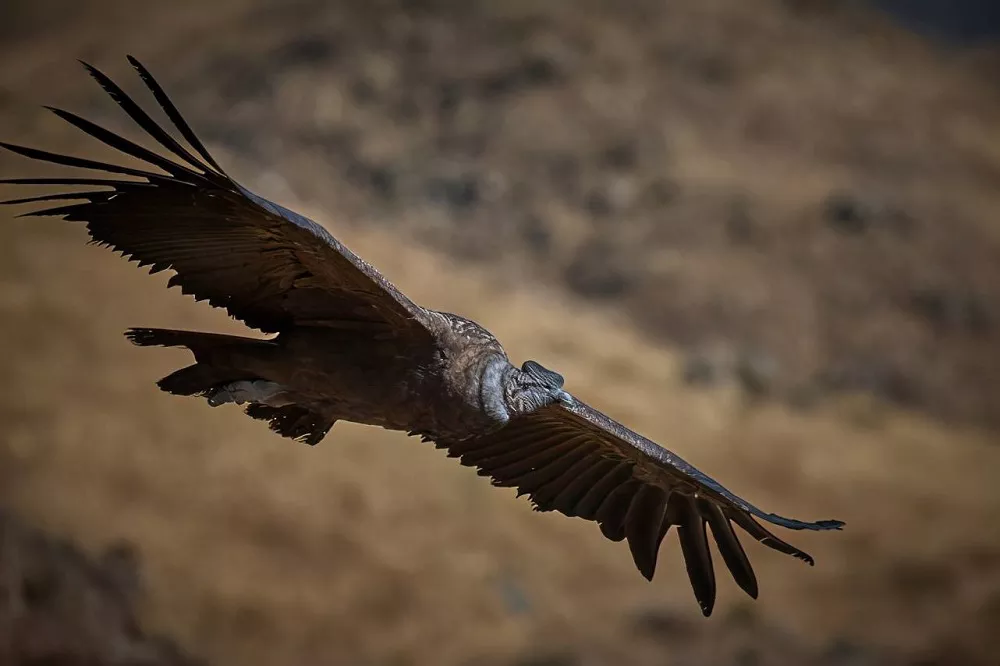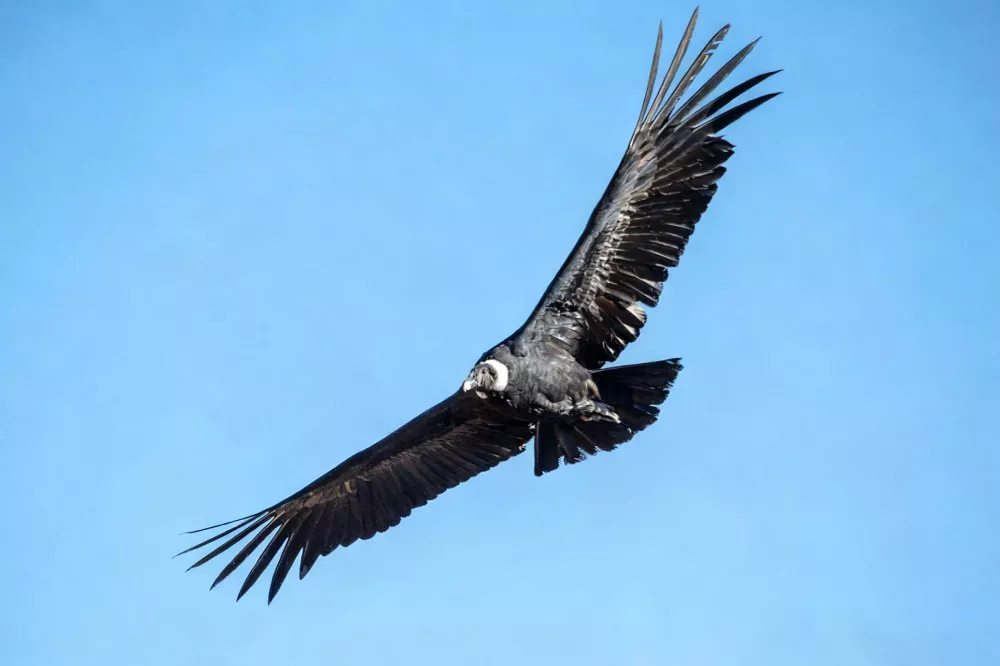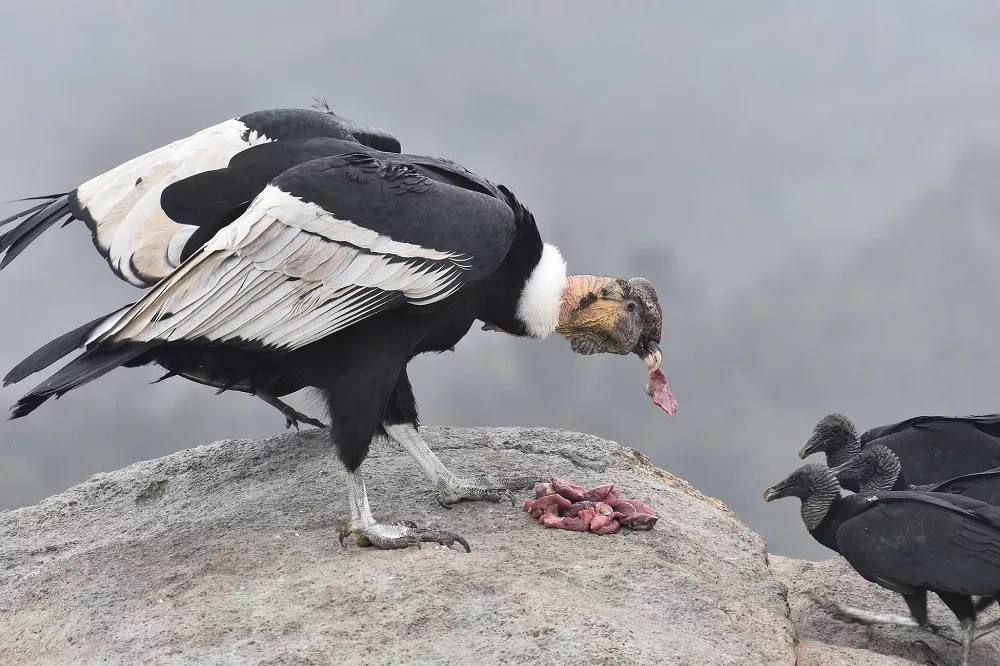The Andean condor (Vultur gryphus) is one of the world’s most impressive and symbolic birds. With a wingspan that can reach up to 3.3 meters (10.8 feet), it is the largest flying bird in the Western Hemisphere. Revered by ancient civilizations and admired by modern naturalists, the Andean condor has long been considered the “King of the Andes.”
This magnificent scavenger is more than just a bird—it is a symbol of freedom, endurance, and the harmony of life and death in the high Andes. Despite its grandeur, the Andean condor faces serious conservation challenges due to habitat loss, poisoning, and human interference.
This article explores the Andean condor’s unique biology, behavior, cultural importance, and conservation status, providing a comprehensive understanding of one of the most iconic birds on Earth.
Physical Characteristics of the Andean Condor
The Andean condor is instantly recognizable due to its sheer size and striking appearance. It belongs to the New World vulture family (Cathartidae) and is most closely related to other vultures like the California condor.
Andean Condor Size and Wingspan
Adult Andean condors are among the heaviest flying birds in the world. Males typically weigh between 11 and 15 kilograms (24 to 33 pounds), while females are slightly smaller, weighing 8 to 11 kilograms (17 to 24 pounds).
Adult Andean wingspan, stretching from 2.7 to 3.3 meters, allows them to glide effortlessly over mountain valleys for hours without flapping. This remarkable adaptation minimizes energy use at high altitudes, where oxygen levels are low.
Distinctive Features
The Andean condor has glossy black feathers, contrasted by a white ruff around the neck and white patches on the wings. Adult males have a fleshy comb on their heads and a distinctive wattle on their neck—features absent in females.
Their bare, grayish-pink head helps them stay clean while feeding on carcasses, as it reduces the accumulation of bacteria and parasites. Their sharp, hooked beak is perfectly designed to tear through thick animal hides, making them efficient scavengers.
Andean Condor Habitat and Distribution
Range Across South America
The Andean condor inhabits the entire length of the Andes mountain range, from Venezuela and Colombia in the north to Chile and Argentina in the south. It thrives in open, mountainous regions where it can take advantage of strong thermal updrafts for soaring.
Preferred Habitats
This species prefers cliffs, open grasslands, and alpine areas. These environments provide suitable nesting sites and easy access to carrion. Condors are often seen gliding along ridges and mountain slopes, scanning for food below.
They are typically found at elevations between 3,000 and 5,000 meters (9,800 to 16,400 feet), though they sometimes descend to coastal regions in Peru and Chile, where they feed on marine carcasses such as dead seals and whales.
Andean Condor Diet and Feeding Habits
Scavenger Lifestyle
The Andean condor is a pure scavenger, feeding exclusively on carrion—the decaying flesh of dead animals. It plays a crucial ecological role as nature’s cleaner, helping to prevent the spread of disease and maintain the balance of ecosystems.
Sources of Food
Their diet includes carcasses of large mammals such as guanacos, llamas, deer, and domestic livestock. In coastal areas, condors consume marine animals washed ashore.
Since they rely on sight to locate food, Andean condors often follow smaller scavengers like caracaras and vultures to find carcasses. Once they locate food, their size and strength allow them to dominate other scavengers easily.
Feeding Behavior
Condors feed communally, with a strict hierarchy based on size and dominance. Males usually feed first, followed by females and younger birds. Their strong beak can tear through thick skin, allowing access to meat that other scavengers cannot reach.
After a large meal, a condor may go several days without eating again. This adaptation helps them survive in areas where food availability is unpredictable.
Andean Condor Breeding and Life Cycle
Monogamous Mates
The Andean condor forms long-term monogamous pairs that often last for life. Courtship involves aerial displays, head bobbing, and mutual preening. Once bonded, pairs return to the same nesting sites year after year.
Nesting Sites
Condors nest on inaccessible cliff ledges or rocky outcrops to protect their eggs from predators. They do not build traditional nests; instead, they lay their eggs directly on bare rock.
A typical clutch consists of only one egg, which both parents incubate for about 54 to 58 days. Because they reproduce so slowly, Andean condor populations grow very gradually—females lay an egg only once every two years.
Parental Care and Lifespan
After hatching, the chick remains dependent on its parents for about a year. Both parents take turns feeding the chick by regurgitating food. The young condor begins to fly at around six months old but continues to rely on its parents for guidance.
In the wild, Andean condors can live up to 50 years, and in captivity, they have been known to live for more than 70 years—making them one of the longest-living birds in the world.
Andean Condor Behavior and Flight
Masters of the Sky
Andean condors are master gliders. They rely heavily on rising air currents (thermals) to stay aloft. By spreading their enormous wings, they can soar for hours while barely moving their feathers.
Researchers have found that condors may fly over 150 kilometers (93 miles) in a single day without flapping their wings more than a few times. This energy-efficient flight strategy is vital for survival in the vast Andean landscape.
Social Structure
Although they spend much of their time alone or in pairs, condors often gather at communal roosts and feeding sites. These gatherings serve as opportunities for social interaction, mating, and communication through body language and vocalizations.
Cultural and Spiritual Significance
Sacred Bird of the Andes
The Andean condor holds a sacred place in Andean mythology and culture. For ancient civilizations like the Incas, the condor represented the upper world—the realm of the heavens. It symbolized strength, immortality, and the connection between the earth and the divine.
In the Inca cosmology, three sacred animals represented the world’s three levels:
- Condor – The sky and the upper world (Hanan Pacha)
- Puma – The earth and the living world (Kay Pacha)
- Snake – The underworld (Ukhu Pacha)
The condor was revered as a messenger between gods and humans, and its feathers were used in ceremonial attire.
Modern Symbolism
Today, the Andean condor remains a national symbol in several South American countries, including Colombia, Ecuador, Bolivia, Chile, and Argentina. It appears on national emblems, flags, and coins, representing power, liberty, and endurance.
Andean Condor Conservation Status
Population Decline
Despite its revered status, the Andean condor is listed as Vulnerable by the International Union for Conservation of Nature (IUCN). Its population has declined sharply in recent decades, with fewer than 10,000 individuals remaining in the wild.
The decline is primarily due to habitat loss, reduced food availability, and poisoning—both intentional and accidental.
Main Threats
1. Poisoning:
Farmers sometimes poison carcasses to kill predators like pumas and foxes. Unfortunately, condors feeding on these carcasses also die from secondary poisoning.
2. Habitat Destruction:
Expansion of agriculture, mining, and urban development has reduced the condor’s natural range.
3. Food Shortages:
As rural livestock practices change and wild herbivore populations decline, condors struggle to find enough carrion.
4. Persecution and Misunderstanding:
In some regions, condors are mistakenly believed to attack livestock, leading to deliberate killing.
Conservation Efforts
Governments, NGOs, and researchers across South America have launched several conservation programs to protect the Andean condor. Key initiatives include:
- Captive Breeding and Reintroduction:
Programs in Argentina, Chile, and Colombia successfully breed condors in captivity and release them into the wild.
- Education and Awareness:
Campaigns aim to dispel myths about condors and promote coexistence with rural communities.
- Habitat Protection:
Protected areas such as national parks and Andean reserves provide safe nesting and feeding grounds.
- Monitoring and Research:
Scientists use satellite tracking to study condor migration and identify critical habitats for conservation planning.
These combined efforts are gradually helping to stabilize condor populations, though challenges remain.
Interesting Facts About the Andean Condor
- The Andean condor can soar at altitudes exceeding 5,500 meters (18,000 feet) above sea level.
- It rarely flaps its wings while flying, conserving energy over long distances.
- Condors can go for up to two weeks without food after consuming a large meal.
- In some Andean villages, condors feature in traditional festivals like the “Yawar Fiesta” in Peru, symbolizing the struggle between the condor (freedom) and the bull (colonial power).
- Their eyesight is extraordinary—they can spot carcasses from miles away.
Conclusion
The Andean condor truly deserves its epithet: the Majestic King of the Andes. It embodies power, subtlety, longevity, and mystery. Its soaring flight connects earth and sky, its ecological role keeps the web of life clean, and its cultural resonance inspires reverence.
Yet, this great bird is vulnerable. Its slow reproductive pace, coupled with human threats, imperils its future. But conservation efforts — grounded in science, respect for local communities, and regional cooperation — offer a path forward.
Frequently Asked Questions (FAQ)
1. Is the Andean condor the largest bird in the world?
Not exactly. The Andean condor (Vultur gryphus) is one of the largest flying birds in the world, but not the largest bird overall. The ostrich holds the title of the world’s largest bird by height and weight. However, the Andean condor has one of the widest wingspans of any bird, reaching up to 3.3 meters (10.8 feet), making it the largest flying bird by wingspan in the Western Hemisphere.
2. What is the biggest bird of prey?
The Andean condor is considered the biggest bird of prey (raptor) in the world when measured by combined wingspan and weight. Adult males can weigh up to 15 kilograms (33 pounds). Its powerful wings and soaring ability allow it to glide effortlessly over the Andes mountains and coastal cliffs for hours without flapping.
3. What is the world’s largest flying bird?
The title of largest flying bird is often shared between the Andean condor and the wandering albatross (Diomedea exulans).
The wandering albatross holds the record for the longest wingspan, up to 3.5 meters (11.5 feet).
The Andean condor, though slightly shorter in wingspan, is heavier and bulkier, making it the largest flying land bird.
4. How many Andean Condors are left?
The Andean condor is classified as Near Threatened by the IUCN. It is estimated that only around 6,700 individuals remain in the wild, with fewer than 2,000 mature adults. Their populations are declining due to habitat loss, poisoning, and reduced food availability. Conservation programs across South America are actively working to protect and reintroduce condors into their natural habitats.




 Facebook
Facebook  Instagram
Instagram  Youtube
Youtube 